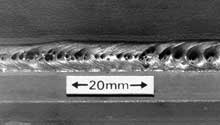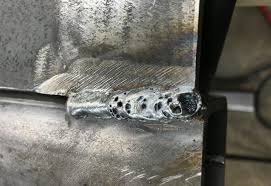Understanding Porosity in Welding: Discovering Causes, Results, and Avoidance Methods
Porosity in welding is a consistent challenge that can significantly impact the high quality and stability of welds. As professionals in the welding industry are cognizant, recognizing the reasons, impacts, and avoidance techniques connected to porosity is important for accomplishing durable and reliable welds. By diving into the root causes of porosity, examining its harmful results on weld high quality, and checking out reliable prevention approaches, welders can boost their understanding and abilities to produce top notch welds regularly. The detailed interaction of factors adding to porosity calls for a thorough understanding and an aggressive strategy to guarantee effective welding end results.
Usual Reasons For Porosity
Contamination, in the kind of dust, grease, or rust on the welding surface area, creates gas pockets when warmed, leading to porosity in the weld. Incorrect securing occurs when the securing gas, frequently utilized in procedures like MIG and TIG welding, is not able to completely safeguard the liquified weld pool from responding with the surrounding air, resulting in gas entrapment and subsequent porosity. Additionally, poor gas protection, frequently due to incorrect circulation prices or nozzle positioning, can leave parts of the weld vulnerable, enabling porosity to create.
Effects on Weld Quality
The presence of porosity in a weld can considerably endanger the general top quality and honesty of the welded joint. Porosity within a weld develops voids or cavities that compromise the framework, making it a lot more vulnerable to splitting, deterioration, and mechanical failing. These voids act as stress concentrators, reducing the load-bearing capacity of the weld and increasing the probability of premature failing under used anxiety. In enhancement, porosity can additionally work as possible sites for hydrogen entrapment, additional intensifying the destruction of the weld's mechanical buildings.
In addition, porosity can prevent the performance of non-destructive screening (NDT) techniques, making it challenging to discover various other problems or gaps within the weld. This can lead to significant security issues, especially in important applications where the structural integrity of the bonded components is extremely important.

Avoidance Techniques Summary
Given the harmful impact of porosity on weld top quality, reliable prevention techniques are critical to preserving the structural integrity of welded joints. One of the main prevention techniques is detailed cleaning of the base materials before welding. Pollutants such as oil, oil, corrosion, and wetness can add to porosity, so guaranteeing a tidy job surface is important. Correct storage of welding consumables in completely dry problems is also essential to stop dampness absorption, which can cause gas entrapment throughout welding. Furthermore, picking the appropriate welding parameters, such as voltage, current, and take a trip speed, can aid minimize the risk of porosity development. Guaranteeing adequate securing gas circulation and protection is one more vital prevention technique, as inadequate gas insurance coverage can cause climatic contamination and porosity. Appropriate welder training and certification are important for implementing preventative actions successfully and regularly. By integrating these avoidance methods into welding practices, the occurrence of porosity can be considerably reduced, resulting in more powerful and extra reputable welded joints.
Importance of Appropriate Shielding
Proper protecting in welding plays an important function in navigate to these guys protecting against climatic contamination and making sure the honesty of bonded joints. Protecting gases, such as argon, helium, or a blend of both, are frequently utilized to shield the weld pool from responding with elements in the air like oxygen and nitrogen. When these responsive elements enter contact with the hot weld pool, they can trigger porosity, causing weak welds with lowered mechanical residential properties.

Poor securing can cause numerous flaws like porosity, spatter, and oxidation, jeopardizing the architectural integrity of the welded joint. Adhering to appropriate securing methods is vital to produce premium welds with minimal problems and guarantee the long life and dependability of the welded components.
Surveillance and Control Approaches
How can welders properly monitor and control the welding process to make certain optimal results and avoid flaws like porosity? One trick approach is with using sophisticated surveillance innovations. These can include real-time tracking systems that provide feedback on parameters such as voltage, present, take a trip rate, and gas flow rates. By continuously checking these variables, welders can determine inconsistencies from the perfect conditions and make instant modifications to stop porosity development.

Additionally, executing proper training programs for welders is important for keeping track of and controlling the welding procedure effectively. What is Porosity. Enlightening welders on the relevance of maintaining constant specifications, such as correct gas shielding and travel rate, can help avoid porosity issues. Routine analyses and certifications can additionally make sure that welders are proficient click this in surveillance and controlling welding processes
In addition, making use of automated welding systems can enhance surveillance and control capacities. These systems can precisely control welding criteria, minimizing the possibility of human mistake and making certain regular weld top quality. By integrating advanced tracking innovations, training programs, and automated systems, welders can efficiently keep track of and control the welding procedure to lessen porosity defects and accomplish premium welds.
Verdict
